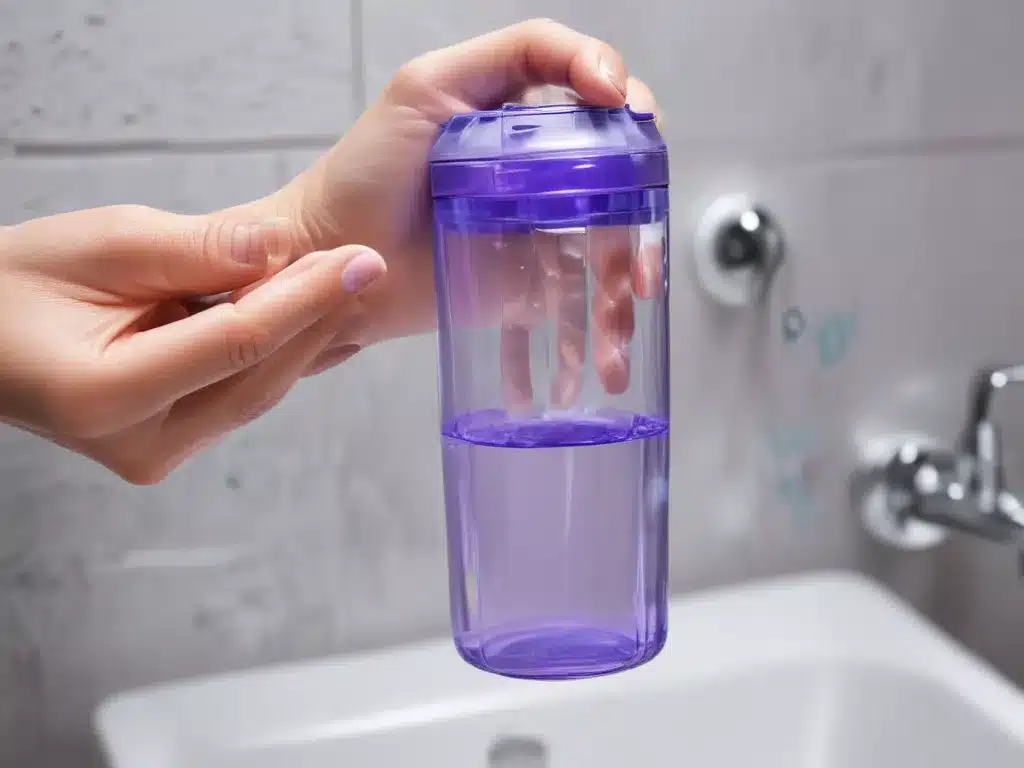What are Ultraviolet Sanitizers?
Ultraviolet (UV) sanitizers are devices that emit UV-C light to disinfect surfaces and objects. UV-C light has a shorter wavelength than visible light and can inactivate or kill microorganisms like bacteria, viruses, and fungi by damaging their DNA or RNA. This prevents them from replicating and causing infections or contamination. UV sanitizers can be used to disinfect various items such as phones, keys, toys, and household surfaces.
UV sanitizers work by exposing the target surface or object to UV-C light for a specific duration. The UV-C light damages the genetic material of microorganisms, rendering them unable to reproduce or function. This process is highly effective and does not leave any residues or chemicals behind, making it a safe and eco-friendly option for disinfection.
There are different types of UV sanitizers available in the market, including wands, boxes, and lamps. Some are designed for specific purposes, such as sanitizing baby bottles or toothbrushes, while others are more versatile and can be used to disinfect various items.
Why Choose UV Sanitizers over Chemical Disinfectants?
UV sanitizers offer several advantages over traditional chemical disinfectants:
-
No Chemical Residues: Unlike chemical disinfectants, UV sanitizers do not leave behind any harmful residues or fumes. This makes them safer for use around children, pets, and sensitive individuals.
-
Environmentally Friendly: UV sanitizers do not contribute to environmental pollution or harm since they do not involve the use of harsh chemicals or toxic substances.
-
Effective Against Resistant Strains: Some microorganisms have developed resistance to certain chemical disinfectants, but UV-C light can effectively inactivate even these resistant strains.
-
No Odors or Stains: Chemical disinfectants can sometimes leave behind unpleasant odors or stains, especially on porous surfaces. UV sanitizers do not have this issue, as they do not involve the use of any liquids or gases.
-
Easy to Use: UV sanitizers are generally user-friendly and require minimal setup or preparation. Simply place the items inside the sanitizer and let the UV-C light do its work.
-
Cost-Effective in the Long Run: While the initial investment in a UV sanitizer may be higher than buying chemical disinfectants, UV sanitizers are more cost-effective in the long run as they do not require continuous purchases of chemicals.
Applications of UV Sanitizers
UV sanitizers have a wide range of applications in various settings:
-
Household Use: UV sanitizers can be used to disinfect household items such as phones, keys, toys, remotes, and other frequently touched surfaces.
-
Healthcare Settings: In healthcare facilities, UV sanitizers are used to disinfect medical equipment, patient rooms, and other high-risk areas to prevent the spread of healthcare-associated infections (HAIs).
-
Food Industry: UV sanitizers are employed in food processing plants, restaurants, and commercial kitchens to disinfect food preparation surfaces, utensils, and equipment.
-
Personal Care: UV sanitizers are used to disinfect personal care items like toothbrushes, razors, and makeup brushes, reducing the risk of cross-contamination and infections.
-
Hospitality Industry: Hotels, resorts, and other hospitality establishments use UV sanitizers to disinfect guest rooms, public areas, and shared spaces for enhanced hygiene and guest safety.
-
Schools and Day Care Centers: UV sanitizers are increasingly being used in schools and day care centers to disinfect toys, classroom surfaces, and other frequently touched areas, reducing the spread of illnesses among children.
How to Choose the Right UV Sanitizer
When selecting a UV sanitizer, it’s essential to consider the following factors:
-
Size and Capacity: Choose a UV sanitizer with the appropriate size and capacity to accommodate the items you need to disinfect. Larger sanitizers may be more suitable for households, while smaller ones are more convenient for personal use or travel.
-
UV-C Wavelength and Intensity: Ensure that the UV sanitizer emits UV-C light at the optimal wavelength (around 254 nanometers) and with sufficient intensity to effectively inactivate microorganisms.
-
Safety Features: Look for UV sanitizers with built-in safety features, such as automatic shut-off mechanisms and protective shields, to prevent accidental exposure to UV-C light.
-
Ease of Use: Consider the user-friendliness of the UV sanitizer, including its design, controls, and ease of cleaning or maintaining the device.
-
Certifications and Approvals: Choose UV sanitizers that have been certified or approved by relevant regulatory bodies, ensuring that they meet safety and performance standards.
-
Brand Reputation and Warranty: Research the brand’s reputation and read customer reviews to ensure you’re purchasing a reliable and high-quality UV sanitizer. Additionally, consider the warranty offered by the manufacturer.
Proper Use of UV Sanitizers
To ensure the safe and effective use of UV sanitizers, follow these guidelines:
-
Read and Follow Instructions: Carefully read and follow the manufacturer’s instructions for proper usage, exposure times, and safety precautions.
-
Ensure Adequate Exposure: Position the items or surfaces to be disinfected in a way that allows for maximum exposure to the UV-C light. Ensure that there are no obstructions or shadows that could prevent proper exposure.
-
Avoid Direct Exposure: Never look directly at the UV-C light source or expose your skin or eyes to the UV-C radiation. Use the sanitizer in a well-ventilated area and avoid using it in the presence of people or pets.
-
Maintain Cleanliness: Keep the UV sanitizer clean and free from dust or debris, as these can reduce the effectiveness of the UV-C light.
-
Replace Bulbs as Needed: UV-C bulbs have a limited lifespan, and their effectiveness decreases over time. Replace the bulbs according to the manufacturer’s recommendations to ensure optimal disinfection.
-
Use in Conjunction with Other Cleaning Methods: UV sanitizers should be used as an additional step in your cleaning routine, not as a replacement for regular cleaning and disinfection methods.
Conclusion
UV sanitizers offer a safe, eco-friendly, and effective way to disinfect various surfaces and objects without the use of harsh chemicals. By understanding the benefits, applications, and proper use of UV sanitizers, you can incorporate them into your cleaning and disinfection routines, promoting a cleaner and healthier environment for your home or business.







